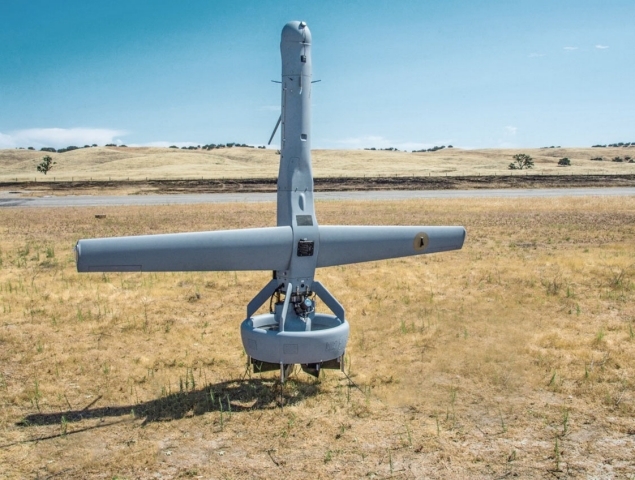
The US Army has begun flying aircraft, participating in its Future Tactical Unmanned Aerial System (FTUAS) capabilities assessment.
The Martin UAV-Northrop Grumman Technology Services (NGTS) V-Bat vertical take-off and landing (VTOL) surveillance UAS first flew on 1 June with the US Army’s Delta Company, 39th Brigade Engineer Battalion, 2nd Brigade Combat Team of the 101st Airborne Division (Air Assault). The 2nd Brigade Combat Team of the 101st Airborne Division (Air Assault) is one of five brigades selected by the service to participate in the assessment, Lieutenant Colonel Ellis Smith, Unmanned Systems Integration Lead, Future Vertical Lift (FVL) Cross-Functional Team (CFT), told Janes on 12 June.
A US Army soldier on 8 April 2020 conducts an engine start on the Arcturus Jump 20 prior to a launch during the FTUAS capabilities assessment at Fort Riley, Kansas. (US Future Vertical Lift Cross Functional Team)
FTUAS is not a competition but an assessment of perspective capabilities needed in a next-generation UAS for brigade combat teams. Along with Martin UAV-NGTS, Textron, L3Harris, and Arcturus UAV are participating in FTUAS, which will help determine requirements to replace the Textron RQ-7 Shadow surveillance and target acquisition UAS.
The Arcturus Jump 20 small UAS completed its new equipment training in April with the 1st Armored Brigade Combat Team, 1st Infantry Division at Fort Riley, Kansas, which is preparing to participate in the Danger Gauntlet brigade level field training exercise. Lt Col Smith said that another Arcturus Jump 20 is scheduled to be delivered in August to the 3rd Brigade Combat Team, 82nd Airborne Division at Fort Bragg, North Carolina.

Looking to read the full article?
Gain unlimited access to Janes news and more...